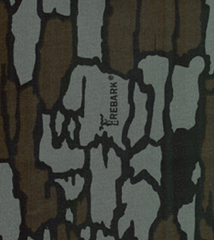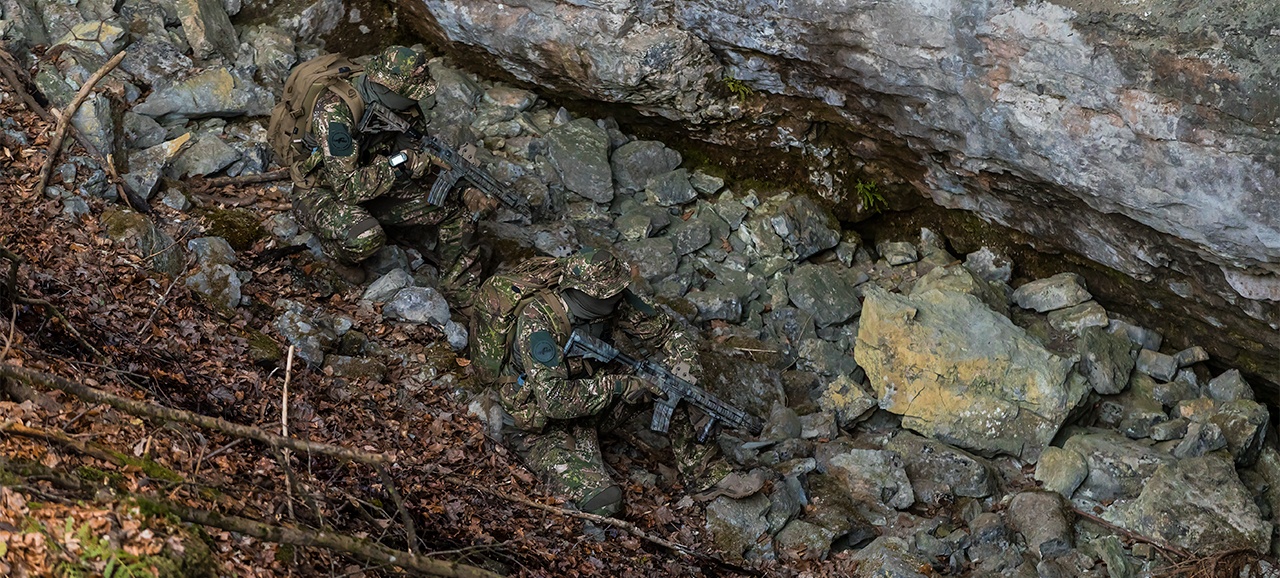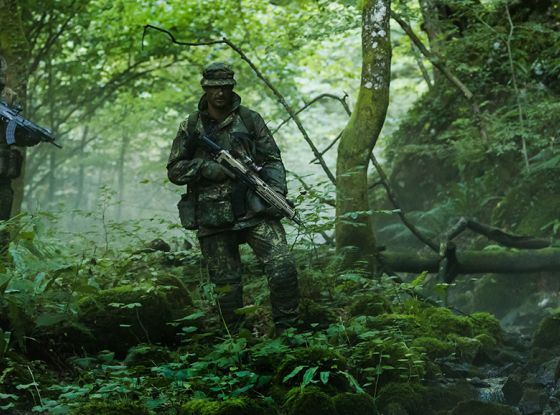Military & hunting camouflages can look similar to the untrained eye. But how and why are the two different? Read more about this topic in this blog post.
In this blog post:
Introduction
Camofluage for hunting and military use have a common purpose: to blend humans into the surrounding environment so that they can avoid detection.
Let’s start by examining two recognised patterns, Realtree Xtra and MultiCam. We see that they are unalike—in part because their designs employ very different methodologies. For Realtree Xtra, the methodology is mimicry; for MultiCam, it’s blending effects. That they embrace different methodologies is understandable in light of the fact that each pattern is meant for vastly different use cases.

Image source: wideopenspaces
Realtree Xtra is made primarily for hunters who will be staying in one spot and seek to conceal themselves from animals.
MultiCam is made mainly for breaking the silhouette of a moving operator through multiple environments (like dense forests and urban areas) and is designed to work against human perception.
We’ve already talked about military camouflage in this blog post. So let's now turn our attention to hunting camouflage and attempt to understand it better before comparing it head-to-head with military camouflage.
Different types of Hunting Camouflages
Humans have hunted throughout history. Indeed, our ancient ancestors’ survival depended on their hunting skills. As a result, the best hunters were highly regarded and in some communities given a status rivaled only by today’s A-list celebrities.
Fast forward to now. Hunters no longer are essential for survival. That’s not to say hunting is gone, because it’s not. Nor is it to suggest that hunting will be uprooted and done away with in the near future, because it won’t.
But a big departure from the past is the use of camouflage. Hunters didn’t use to cloak themselves. It wasn’t until the second half of the 20th century that camo became a thing for hunters.
Hunting camouflage history was made in the late 1970s with the introduction of the Trebark pattern developed by Jim Crumley. Trebark soon took off with hunters. Its popularity was such that the market quickly began brimming with many types of camouflage hunting shirts, pants, vests, jackets, caps, and more.

Artwork from a Trebark camouflage advertisement that appeared in archery magazines.
Image source: Bowsite
Trebark Camo

Image source: grandviewoutdoors
The idea behind Trebark was simple enough: create a pattern that mimics vegetation in North American forests.
This was achieved by experimentation with various colours copied from photographs of trees. The pattern was named Trebark because it resembles the bark of trees that predominate across North America.
ASAT Camo

Image source: Pinterest
ASAT is short for All Season All Terrain. It resembles France’s Lizard camo pattern, but with more prominent lines.
The ASAT pattern itself consists of curved brown and black lines against a tan background. It works to break up the outline of the wearer.
Deception Camo

Image source: predatorcamo
Predator’s Deception line began a revolution by abandoning photorealism and replacing it with the high-contrast patterns.
The company’s latest efforts include a new 3D print version that adds shadows and more depth to the pattern.
Vias Camo

Image source: KUIU
Designed for high-contrast environments above the treeline, the KUIU Vias—with its distinct black lines and large macro elements—is effective at long range. It looks like an adapted mountain version of the ERDL pattern.
Colours match the surrounding rocky areas by shifting from a tan background to light grey, dark grey, brown, and black.
The “Predator” revolution
A new era in hunter camouflage began when W.L. Gore acquired Sitka, a major player in the hunting industry.
Stika is the maker of the Optifade concealment system, which embodies scientific breakthroughs in man’s understanding of how animals see. Optifade also draws on advanced computer-generated patterning technologies.

Image source: Optifade
Jason Hairston, the cofounder of Sitka, decided to improve and polish the Optifade design by leaving the company and launching KUIU. The principles to his approach were not new to the hunting scene. However, the high-contrast idea was.
During a trip he took to Africa, Hairston noticed certain similarities among predatory animals such as wild dogs and snakes. He observed that they did not mimic their surroundings, yet remained difficult to spot at a distance.
He eventually figured out the reason. It was that the animals’ colours made hard transitions from dark to light. These, he realised, were highly effective at breaking up a silhouette. Hairston then translated this discovery to a new camouflage pattern methodology that went on to become widely adopted.

Image source: Prym1 and Kryptek
The inspiration of high-contrast “predatorial” patterns is easily noticed in both Kryptek’s Highlander (left) and Prym1’s Woodland (right) patterns.
What is the difference?
A good camouflage system is one that marshals against your quarry the very methodology that the quarry is using to detect you. And herein lies the difference between camouflage for hunting and for military use.
But before elaborating, we should briefly discuss environments and, more importantly, the methods used for detecting humans or operators in both.
Military detection methods:
- Visual
- Sound
- Near-infrared
- Thermal
Hunting detection methods:
- Visual
- Sound
- Scent
The overlap between detection methods occurs at the intersection of visual and sound. But visual is the relevant one here because camouflage directly affects what the quarry/target does or doesn’t see.
Visual detection differences
Visual detection works similarly across all species—animals and humans alike. In broad biological terms, eyes are sensitive to specific colours (or wavelengths) of light and detect them by means of photoreceptor cells.
Humans have trichromatic vision, which allows detection of three different colours (red, green, and blue).
Animals such as deer and elk, meanwhile, have only two colour receptors (blue and green). This is why the orange vests hunters wear are not so ridiculous—the bright and vibrant colour alerts other hunters, but not animals because the latter see it as non-threatening grey.
So that’s difference Number One: colour perception. Despite different environments, hunting camouflage has less ground to cover in that animals see fewer colours than do humans.
Engagement distance is another visual-related issue. Military camo like MultiCam has to cover multiple ranges and must include all spectral elements—from macro to midi to micro.
Normal human vision is 20/20. But normal deer vision is 20/200, meaning that an object 200 feet away won’t be seen clearly by a deer until the animal is standing just 20 feet away from it. For this reason, hunting camouflage has no need for the complex micro-elements found in military camouflage. This is difference number two: distance perception.
The final difference touching upon the realm of visual detection is the very nature of hunting versus military engagements. Military camouflage has to work from point A to point B even if the environment changes in between. It also must be at least semi-effective while the wearer is on the move.
In contrast, hunting camouflage only has to work at point A. Point A is the spot you pick and remain at because that’s where you best blend in. But your camo doesn’t also have to be effective at point B. Moreover, you wouldn’t want to move to point B because game animals have excellent movement detection senses—shift locations and you’ll be detected after just a few steps. This is difference number three: moving versus staying still.
Conclusion
To be honest, it’s not really fair to weigh camouflage made for hunting against that made for the military. That’s too much like comparing apples to oranges.
Furthermore, military camouflage isn’t inherently better at what it does just because it’s labeled “military.” The fact is military and hunting patterns are constructed differently because such is required by the nature of their operational environments.




